If an ugly view ruins the ambience of your outdoor space or if your noisy neighbors are spoiling your enjoyment of your backyard, consider growing a living fence! Here are different types of fast-growing shrubs for privacy.
A privacy hedge can be used to frame a nice view or mark a boundary and it can be an effective windbreak or winter snow fence. There are many plants to choose from to form a natural-looking barrier that can not only block an unsightly view but also filter air pollution and absorb sound, reducing street noise.
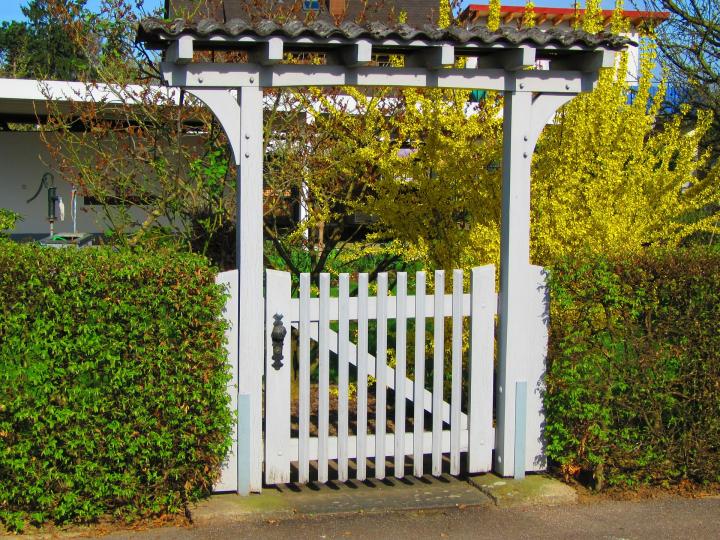
A welcoming gate flanked by hedges leaves no doubt about where to enter this property.
Fast-Growing Shrubs for Privacy
Think about what your needs are and what the plants will require for maintenance before you start.
For an effective hedge you need attractive plants that are fast growing. They should also have dense foliage.
Consider the mature height and width of the plants. It’s important that your hedge is continuous and does not leave gaping holes.
Finally, be aware that a plant might be a perfect hedge in one location but could be considered a hideous invasive in another part of the country. Check the invasive plants list for your state before you invest in something you may regret planting and have to remove at a later date.
- Japanese barberry, burning bush, autumn olive, and privet are just a few plants that were once used widely for hedges that are now considered dangerous invasives in most of the country.
Evergreen Hedges
An evergreen hedge provides architectural interest all year long and is best for muffling noise. This is the kind of hedge we think of most often. It can be trimmed for a formal look or left to grow into a natural-looking, informal fence. Here a couple of popular choices hardy in zones 4-9:
- Arborvitae ‘Emerald Green’ (Thuja occidentalis) is a favorite. It grows 15 feet tall and 4 feet wide forming a tall column of greenery.
- Boxwood ‘Green Gem’ (Buxus) is a hybrid that needs little pruning to maintain its shape and is resistant to winter burn. It grows 3-4 feet tall and wide. Boxwoods are shallow rooted and need a well-drained location. Most are slow growing, perfom best in full sun but will tolerate some shade. Most boxwoods are evergreen but some are deciduous.
- Juniper ‘Blue Arrow’ (Juniperus scopulorum) grows tall and narrow - 15 feet high but only 2 feet wide - making a great screen for a small area.
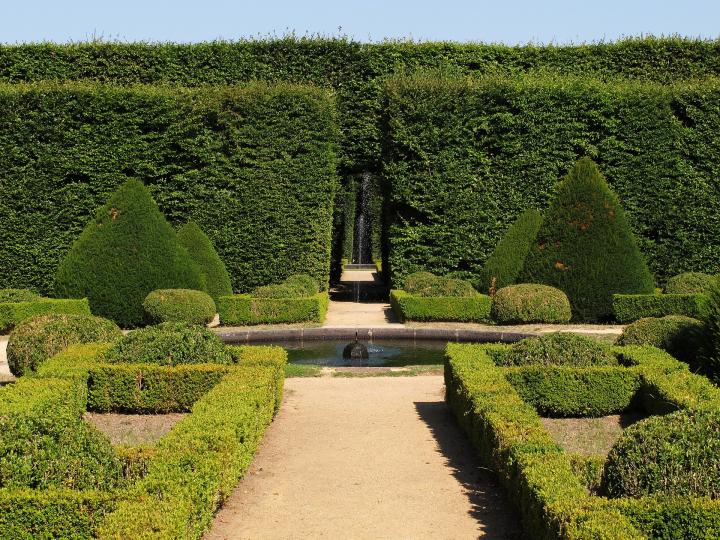
Evergreen hedges - tall and small.
If you live in deer country avoid those evergreens that they love to eat including yews, arborvitae, and holly. No plant is totally deer-proof but boxwood, juniper, and hemlock are more deer resistant and stand a better chance of survival.
Deciduous Hedges
A hedge that loses its leaves in winter can still be an effective screen if it is thick enough. Like the evergreens, most can be trimmed into a formal shape or left natural. Many offer the added perk of flowers or fall color too! Here are a few hardy choices:
- Forsythia will give you bright yellow flowers first thing in the spring and when planted closely will form an impenetrable hedge. It thrives in full sun to part shade.
- Weigela has pink trumpet-shaped flowers and grows to be 4 feet tall and 5 feet wide. It does best in full sun to part shade.
- Lilacs, especially ‘Miss Kim’ and ‘Palibin,’ are smaller and more compact than regular lilacs and lend themselves to being clipped. If you prune do it right after flowering to avoid sacrificing next year’s blossoms.
- Rose of Sharon can be planted 2-3 feet apart in a double row to form a thick hedge that will bloom in late summer.
- Rosa rugosa will form a thorny hedge that will keep out any intruder. Unlike the hybrid tea roses that deer love to eat, this one is pretty much deer-proof.
- Quince is another thorny, thick grower that forms a dense hedge whether trimmed or left natural. In the spring it will light up your landscape with its fiery pink flowers.
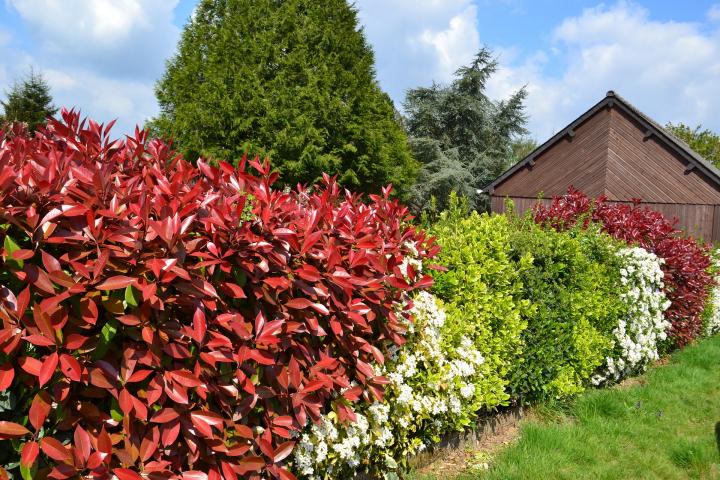
For those that can’t decide - plant one of everything for a colorful hedge!
Edible Hedges
Who wouldn’t want a hedge that offers not only flowers but fruit as well! Here are a few that will add to your edible landscape and make good boundary plants too. Just be prepared to share the fruit with your neighbor.
- Highbush blueberries offer 3 season interest - flowers in spring, berries in summer, and beautiful fall foliage. Most top out around 6 feet tall, Plant 3 feet apart to form a dense hedge. Zone 3-7
- Gooseberries & currants (Ribes) were once thought of as forbidden fruit since they were banned in many areas of the country for hosting white pine blister rust. Now there are immune and resistant hybrids available for sale. The plants grow fast and when planted 2-4 feet apart will form thick and thorny hedges in a few years. Jostaberries are a cross between gooseberries and currants and bear larger fruit on a thornless plant. All these berries make delicious jam! Ribes are very cold hardy, some varieties grow in zone 2.
A Cut Above
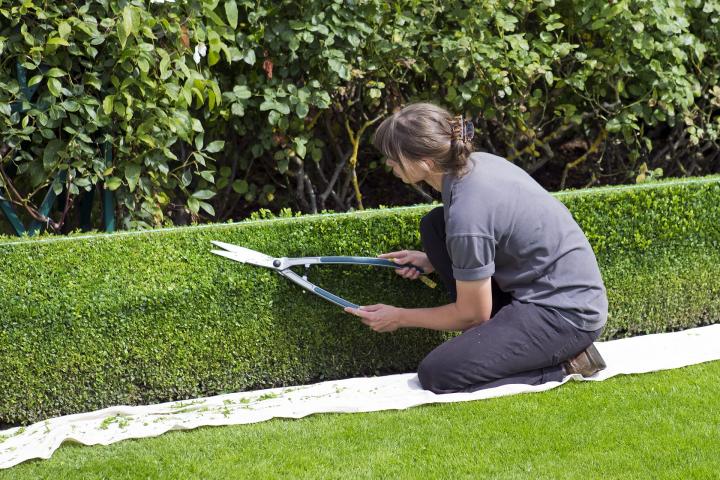
If you want a full, formal looking hedge you will have to do some pruning at least once each summer to encourage branching. When trimming, taper toward the top. Making the base wider than the top allows lower branches to get sunlight. Get creative with your pruning! I have seen several hedges pruned to a wave shape across the top that is quite eye-catching.
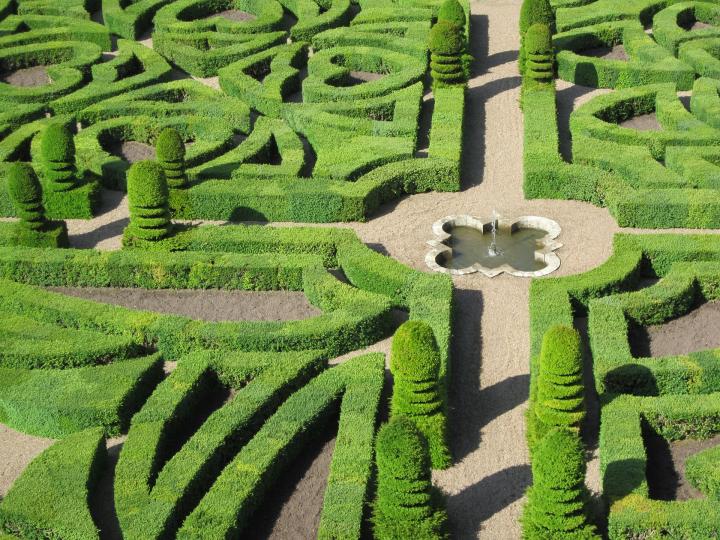
But don’t get too crazy or your yard could end up looking like this!















Comments